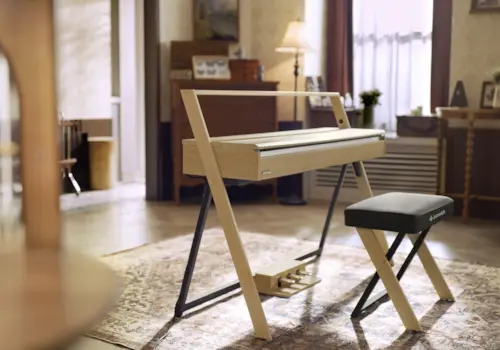Tips for metronome practice to help you improve your piano playing
The metronome is rather like Marmite – you either love it or hate it!
An often much maligned device, it’s essentially a practice tool to help students keep time during their practice sessions. As a teacher, it’s a device which my students are very much accustomed to using because I believe it’s essential for instigating excellent time-keeping and developing a professional sound.
As a general rule, unless you possess an ‘inbuilt’ sense of pulse, it will be challenging to present a convincing interpretation without its constant presence during your practice sessions. However, if the metronome is used consistently every time you practice, you will eventually learn to establish rhythmic precision.
How can we use it to our advantage? Here are a few metronome practice tips:
1. Metronome tips for practising your scales

If you are new to using this device, start by setting a slow ‘tick’, or pulse, and clap along to it, ‘sitting’ on the pulse, which will help you to become accustomed to the ‘tick’.
Transfer this to practising your scales and arpeggios. Set your metronome to a slow quaver pulse (eighth-note pulse), perhaps a quaver = 100 or 120 beats per minute, and play each note in your scale to one tick.
This is a basic method for learning to ‘sit’ on the pulse. When you learn to do this, you will quell the urge to rush or linger. When secure, you can continually raise the metronome mark until you are able to play evenly at a fast tempo. This piano metronome tip should give you a strong idea of how accurate your in-built sense of pulse is as well.
2. Metronome tips for practising your pieces

Now let’s apply this technique to your piano pieces. You might be playing an exercise or study, or a short piece, such as a J S Bach two-part invention or prelude and fugue, which is appropriate repertoire to practice your pulse-keeping. Such music usually consists of many rapid semiquaver (sixteenth-note) passages in both hands, providing the perfect foil for developing metronome use.
Set a slow semiquaver pulse. By using the ‘tick’ on this short time value, so that it sounds on virtually every note, work through the piece hands separately and together. Play with a deep touch on each note (at slow speeds) and you will learn to control movement between notes, so that when notes are played they sound even both rhythmically and tonally.
3. How to gradually raise the metronome speed without overdoing it

Now it's time to gradually raise the speed.
Eventually, set your metronome to a quaver pulse, and then a crotchet (quarter-note) pulse, or tick. By the time you are playing four notes or two notes to every metronome ‘tick’ you should have lost any urge to rush or linger between ticks, which is often what happens if students are left to count unaided.
This practice tool takes time and patience, but it’s well worth the effort! Check out our video lesson on correct ways to use the metronome.
4. Metronome tips for rhythmically flexible pieces

You can also use the metronome on rhythmically flexible pieces such as a Chopin mazurka or nocturne.
Once note patterns and fingerings are secure, decide how to sub-divide the main beat. If you are playing a nocturne with constant quaver movement in the left-hand part, such as the Nocturne in B flat minor Op. 9 No. 1, you might prefer to set a quaver ‘tick’.
Start by playing hands separately and together as written, that is, without using any rubato (or taking time for expressive purposes). You might require a slow tempo to do this at first, to ensure the fioritura passages can be placed correctly.
When you raise the speed, and take more liberty with the rhythm, that is, employ rubato, you will hopefully find your interpretation to be rhythmical as opposed to overly flexible, which is necessary, even in Romantic style music.
5. Try using the metronome right from the off

You can even use the metronome at the start of the learning process, during slow, separate hand practice; if you can keep your ear open for the tick as you practice, you will continuously build your sense of pulse and the need for the metronome will become increasingly less.







